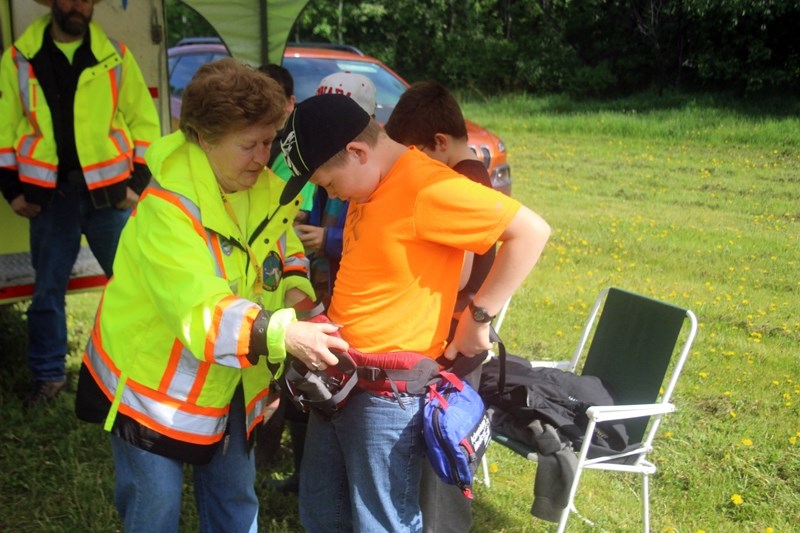Grade 6 students from Dunstable and Rich Valley schools participated in the Wetland Education Day at Lac La Nonne’s senior centre resort June 1.
In addition to presentations regarding Lac La Nonne wildlife by retired Fish &Wildlife officer Chuck Hambling and water-quality monitoring by Penny Stephani, Highway 2 Conservation member and local bat expert Lisa Card debunked myths associated with the nine bat species found in Alberta.
Members of the Klondike Trail Search and Rescue were also on hand to teach students what to do if they should ever get lost in the woods.
“This is something that we do every year with the schools,” Stephani said, adding due to rain from earlier in the morning, Card, who had been scheduled to speak at lunch, kicked the event off.
“We broke the students into groups and had them visit different stations — staying safe on the wild side with Klondike Trail Search and Rescue, Lac La Nonne creatures with Chuck Hambling, water-quality monitoring with myself and aquatic insects with Lisa [Card] from Highway 2 Conservation,” Stephani said.
Highway 2 Conservationist bat specialist Lisa Card said out of the nine Alberta bat species, the most common, the little brown bat, are on Canada’s species at risk list.
Alberta Environment and Parks (AEP) estimates the brown bat population is between one to one and a half million.
In addition to a loss of habitat, Card explained the reason bat populations are dwindling is due to a disease called white-nose syndrome.
“It was brought over to North America from Europe by people who like to explore caves and it first came to our attention in 2006-2007,” Card said, adding there is no cure for the disease. The disease is estimated to have killed more than seven million bats since the first outbreak.
“It’s very sad for me because they are one of my most favourite animals in the whole world and they are extremely important to the ecosystem, as well as beneficial to the agricultural industry,” Card said.
“No other animal eats bugs the way bats do. Typically, a little brown bat will consume up to 1,000 mosquitoes per hour and they aren’t like rodents despite the fact their scientific name in latin translates to ‘little flying mouse’.”
Card said landowners generally think bats chew on wires and the walls of buildings.
“That isn’t the case at all,” she said, adding that the work bats do is the equivalent of $3.7 billion in agricultural pest control per year.
Card said some of the biggest misconceptions about bats is that they all drink blood, carry rabies and like to make nests in human hair.
“While some bats do in fact consume blood, none of the nine species in Alberta does and while rabies is something that the majority of people are concerned with, for good reason, bats don’t carry the disease at a higher rate than any other animal in the wild,” she said, adding bats carry the disease at a rate of 0.05 per cent of the total colony population.
“If a bat has rabies, it will act weird like flying around during the day but it won’t be super-aggressive and try to bite your face off. Most likely, it will just go off and die by itself. You’re just as likely to get rabies from a mouse, or a feral cat.”



